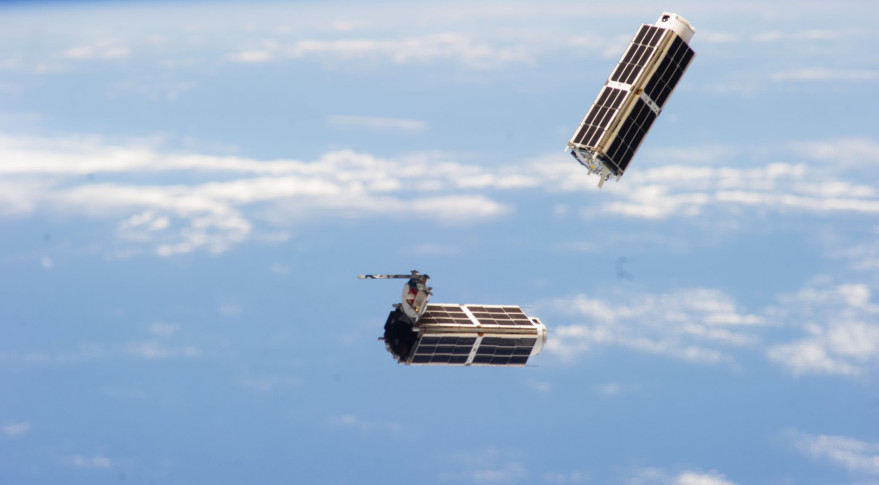White House Announces Small Satellite Initiative

WASHINGTON — The White House announced a new initiative Oct. 21 to promote the development of small satellites, collecting under one roof a number of efforts, some of which started months ago.
The "Harnessing the Small Satellite Revolution" initiative, announced in a White House Office of Science and Technology Policy statement, highlights several ongoing efforts by NASA, the Pentagon and other federal government agencies to help develop smallsats or make use of images or other data they provide.
Some elements of the initiative were announced weeks or months ago. The OSTP announcement highlighted a $20 million award the National Geospatial-Intelligence Agency made to Planet, the San Francisco-based company developing a constellation of Earth imaging satellites. "The imagery has many operational uses, including environmental monitoring, augmenting higher resolution capabilities, change detection, and answering intelligence questions," the announcement stated.
However, NGA awarded that contract to Planet, formerly known as Planet Labs, on Sept. 12, according to the business opportunities section of the NGA website. The seven-month contract gives the NGA access to Planet's global imagery archive, updated every 15 days.
The award is described as an "introductory contract" by the NGA, and Planet indicated it would seek additional NGA and other government work. "This is just the beginning of our work with the NGA and we hope many agencies of the U.S. government will benefit from our global, high cadence satellite imagery," the company said in an Oct. 21 statement.
The OSTP announcement also mentioned awards made by the National Oceanic and Atmospheric Administration to purchase commercial weather data from two companies, GeoOptics and Spire Global. The contracts, with a combined value of a little more than $1 million for a pilot program running through April 2017, were announced Sept. 15.
One new effort that is part of the White House initiative is a NASA "virtual institute" devoted to smallsat technology research. The Small Spacecraft Systems Virtual Institute, or S3VI, will based at NASA's Ames Research Center, which has hosted many previous NASA smallsat projects, and be a "common portal" for all NASA smallsat activities starting in early 2017.
Get the Space.com Newsletter
Breaking space news, the latest updates on rocket launches, skywatching events and more!
"The S3VI will provide the first one-stop shop for technical knowledge in the rapidly burgeoning small spacecraft technology fields," said Jay Bookbinder, director of programs and projects at Ames, in an Oct. 21 agency statement. "This will result in more efficient development efforts, and enable smaller vendors to compete more effectively in this market."
NASA will also commit $30 million to smallsat programs, including $25 million for Earth science data buys, according to the OSTP statement. The other $5 million will support smallsat constellation technology development.
The agency also now has an advocate for cubesats leading one of its mission directorates. NASA named Thomas Zurbuchen, who had been a professor of space science and aerospace engineering at the University of Michigan, as its new associate administrator for science Sept. 27. Zurbuchen led a National Academies study on the use of cubesats for science missions published earlier this year.
This story was provided by SpaceNews, dedicated to covering all aspects of the space industry.
Join our Space Forums to keep talking space on the latest missions, night sky and more! And if you have a news tip, correction or comment, let us know at: community@space.com.

Jeff Foust is a Senior Staff Writer at SpaceNews, a space industry news magazine and website, where he writes about space policy, commercial spaceflight and other aerospace industry topics. Jeff has a Ph.D. in planetary sciences from the Massachusetts Institute of Technology and earned a bachelor's degree in geophysics and planetary science from the California Institute of Technology. You can see Jeff's latest projects by following him on Twitter.
Most Popular


